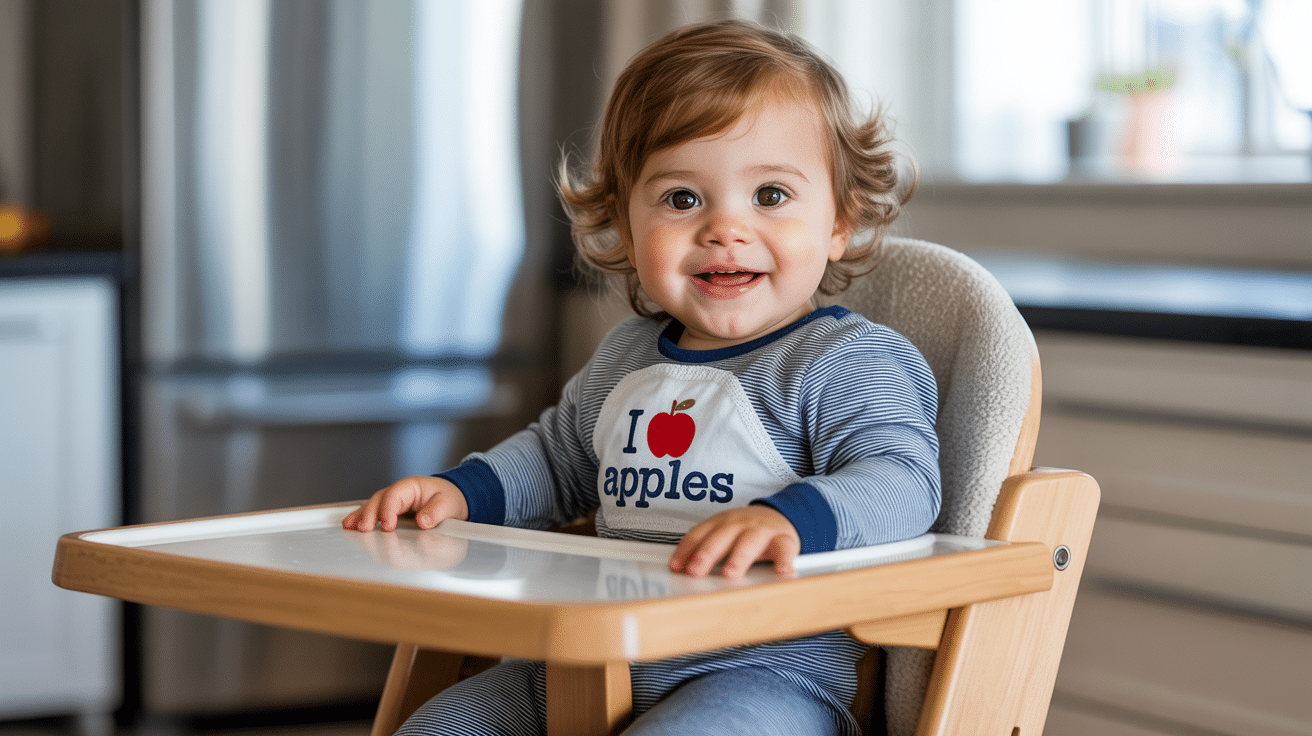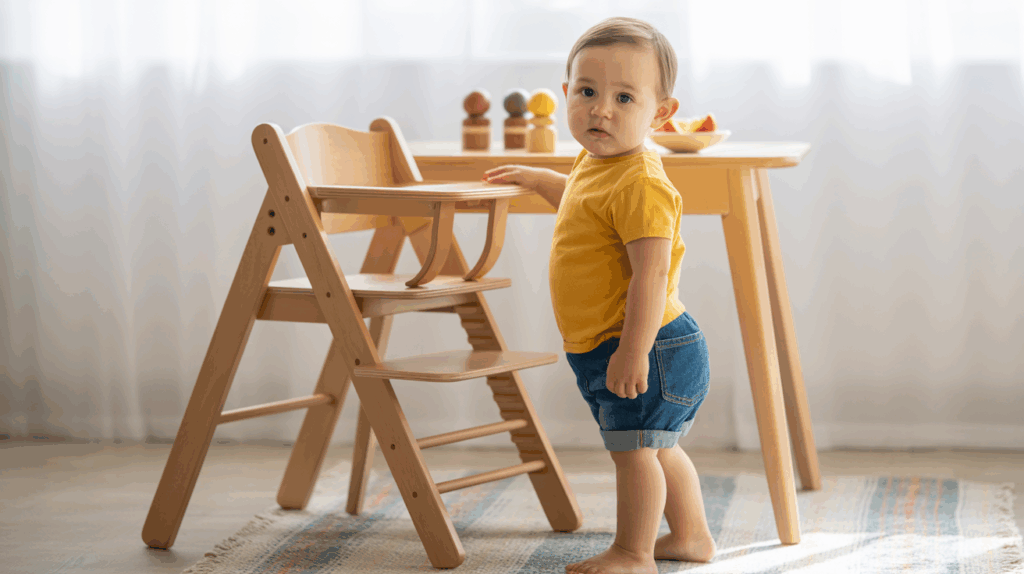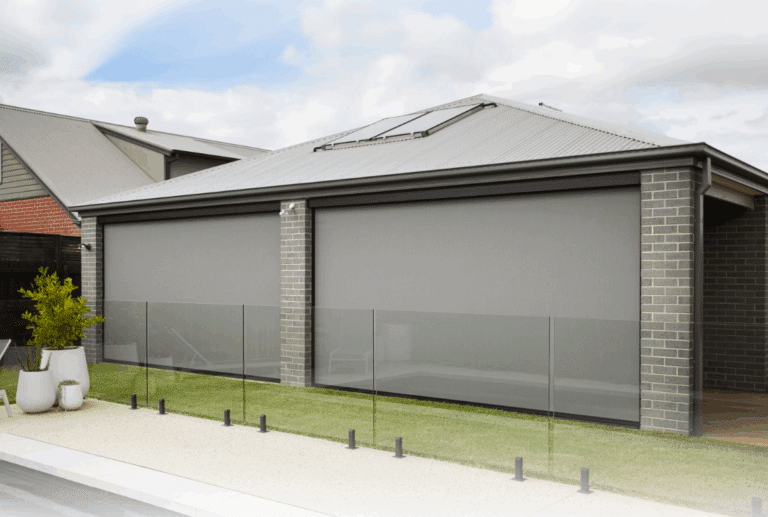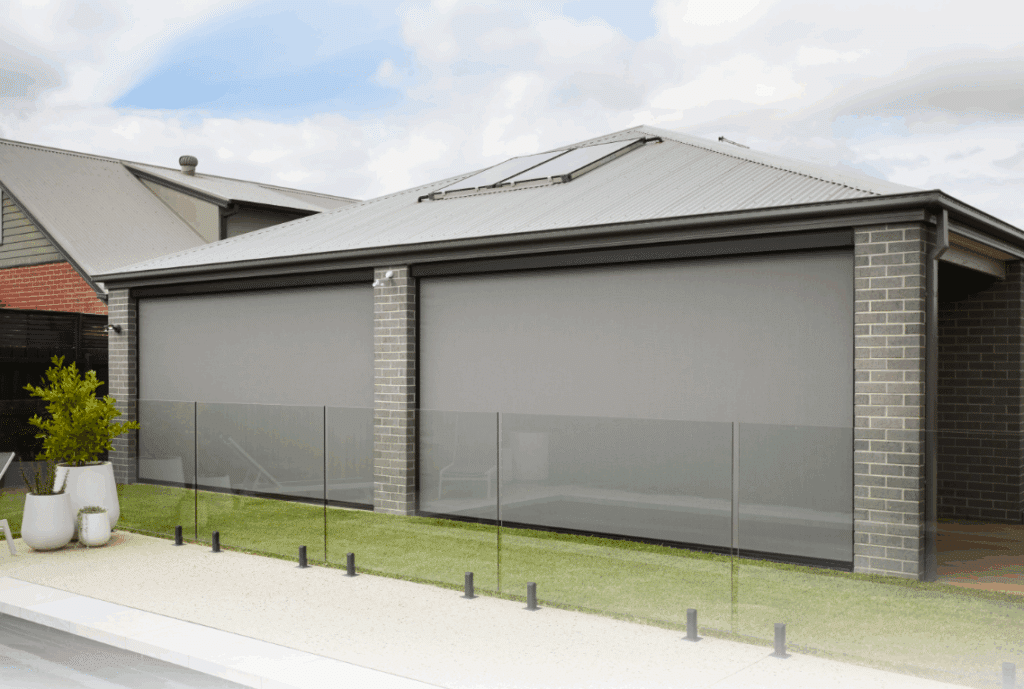Choosing when to stop using high chair is a big step for many families. It’s not always easy to know the right time, but it’s something every parent faces.
High chairs make feeding time safe and simple, but as your child grows, those needs change.
So, how do you know when to stop using high chair for your little one? In this blog, we’ll talk about the signs to look for, safety tips, and how to help your child adjust to a new seat at the table.
This guide is here to help you make the best choice for your child and your family.
When do Babies Typically Start Using a High Chair?
Babies usually start using a high chair when they can sit up on their own and hold their head steady. This often happens between 4 and 6 months of age.
At this stage, babies begin eating solid foods, and sitting in a high chair helps them join family mealtime safely.
Before placing your baby in a high chair, make sure they have good head and neck control. If their head droops or they can’t sit upright without support, they are not ready yet. Watch for straight shoulders and the ability to move their arms freely while sitting.
Some high chairs can recline for younger babies, but feeding should only start once the baby can sit upright safely. Using a high chair too early can be unsafe because babies need strong neck muscles to avoid choking or injury.
Starting high chair use at the right time helps your baby develop good eating habits and enjoy family meals. Always supervise your baby while in the high chair and follow the manufacturer’s safety instructions.
How Long Can a Child Safely Use a High Chair?

Most children start using a high chair when they are about 6 months old. This is usually when they can sit up by themselves and hold their head steady.
High chairs are made to keep babies safe and comfortable during meals. It depends on your child’s size, how active they are, and if they can sit safely in a regular chair.
Always check the high chair’s weight and height limits. If your child is too heavy or tall for the chair, it is time to switch to another seating option.
Never leave your child alone in the high chair, even for a short time.
Signs It’s Time to Stop Using the High Chair

Using a high chair is great for babies and toddlers during mealtime. But as your child grows, there comes a time to stop using it.
Knowing when to stop using high chair helps keep your child safe and comfortable. Most children use a high chair from about 6 months old until they are 2 to 3 years old.
Here are some important signs that show it’s time to stop using the high chair:
Trying to Climb Out
If your child tries to climb out of the high chair, it is a big safety risk.
Climbing can cause falls and injuries. When your child starts to push up with their legs or pull on the tray to get out, it means they are ready for a different seat.
At this point, a booster seat or toddler chair is safer. Always act quickly when you see this behavior to prevent accidents.
Feeling Cramped
As your child grows taller and heavier, they may start to feel cramped in the high chair. Even if the footrest or seat adjusts, your child might look uncomfortable or squished.
If their knees are bent too much or their body looks squeezed, it’s time to move on to a bigger seat that fits them better. Comfort during meals helps your child enjoy eating and develop good habits.
Sitting Well on Their Own
When your child can sit upright without help and stay balanced for a long time, they may be ready to use a booster seat or a regular chair.
This shows they have good control of their body and can sit safely at the table without needing the high chair’s support. This skill is important for safe eating and learning table manners.
Frustration or Restlessness
If your child gets upset, restless, or bored because they feel stuck in the high chair, it could be a sign they want more freedom. Some children show this by fussing, crying, or trying to move too much.
Switching to a new seat can make mealtime more enjoyable for them. A happy child is more likely to eat well and cooperate during meals.
Tipping the Chair
If your child is strong enough to tip, rock, or push the high chair, it is unsafe to keep using it. High chairs are designed to be stable, but active toddlers can sometimes cause them to tip over.
When this happens, it’s best to choose a safer seating option that fits your child’s activity level. Preventing falls is key to keeping your child safe during mealtime.
Ready to Join Family Meals
Many children want to eat at the family table like everyone else. When your child shows interest in sitting with the family and using regular utensils, it’s a good time to switch to a booster seat or toddler chair.
This helps them feel included and encourages good eating habits. Joining family meals also supports social skills and healthy routines.
Safety Considerations When Using a High Chair
When using a high chair, safety is very important to protect your child from harm. These considerations will also help you determine when to stop using a high chair for your growing toddler. Here are simple safety tips to follow:
- Check Stability: Make sure the high chair is strong and does not wobble or tip easily. If it has wheels, lock them before placing your child in the chair.
- Use Safety Straps: Always buckle the safety strap snugly around your child. This keeps them from slipping or climbing out.
- Avoid Big Openings: The spaces around the straps should be small enough so your child cannot slip through or get stuck.
- Keep the Tray Secure: If the chair has a tray, make sure it is locked in place and cannot come off easily. Do not rely on the tray to hold your child in the chair.
- Keep Area Clear: Do not place the high chair near tables, counters, or walls where your child can push and tip it over. Remove sharp or hot items nearby.
- Never Leave Alone: Always watch your child when they are in the high chair. Children can try to climb out or choke if left unsupervised.
- Follow Safety Standards: Choose high chairs certified by safety groups and check for any recalls before use.
Alternatives After the High Chair
Once you’ve determined when to stop using a high chair for your child, mealtime doesn’t have to get tricky. There are many fun and safe ways to help your child join the family at the table.
- Booster Seats: Booster seats are like a little seat that attaches to a regular chair. They lift your child up so they can reach the table easily. Booster seats are light and easy to carry, so you can use them at home or when you visit friends.
- Toddler Towers: A toddler tower is a special step stool with rails around it. It lets your child safely stand at the kitchen counter. This way, they can watch you cook or even help with simple tasks. It’s a fun way to learn and be part of the action!
- Montessori Chairs and Weaning Tables: These are small chairs and tables made just for kids. They fit your child perfectly and help them sit and eat all by themselves. Plus, they look cute and help your child feel grown-up!
- Under-the-Chair Boosters: These boosters clip right under a normal chair to raise the seat a little. They are great for kids who want to feel like big kids but still need a little boost to reach the table.
- Sitting on a Parent’s Lap: For younger babies, sitting on a parent’s lap during meals is cozy and safe. It helps your baby feel close and loved while trying new foods.
Choosing the right seat depends on your child’s age, size, and how much they want to be part of family meals. These options help your child feel included and comfortable, making mealtime fun for everyone!
To Conclude
Knowing when to stop using a high chair is all about watching your child and making sure they are safe and comfortable.
Look for signs like outgrowing the seat, being able to sit up on their own, or wanting to join the family at the table.
Moving on from the high chair is a big step, but with a little patience and support, your child will be ready for mealtime in their new seat in no time.
Trust your instincts, keep safety first, and enjoy this new stage together.


















